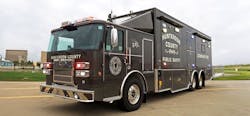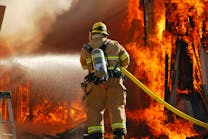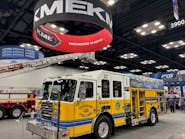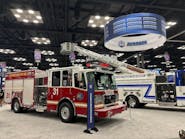FAMA Launches Fire Apparatus Design Symposium
New for this year, the Fire Apparatus Manufacturer’s Association is hosting the first annual Fire Apparatus Design Symposium. Participants will gain insight into key aspects of fire apparatus features that will help them when specifying new apparatus. Presentations will begin by covering the basics of apparatus specification writing, and quickly transition to in-depth training on various aspects of apparatus design. Do not expect a sales job! Factory representatives will provide informative and balanced presentations aimed at educating, not selling. Attendance should pay back in spades by allowing you to make better informed decisions on your next apparatus purchase; saving money, time, and having an apparatus that is better suited to your operations.
Who should attend
- Members of apparatus spec committees
- Fire chiefs
- Fleet managers
- Anyone wishing an education on key aspects of apparatus design
2025 Symposium Agenda
Apparatus Specification Writing 101
This is your first time on an apparatus purchasing committee, you have not done this in a while, or you just want to hone your skills. This session will review all the basic things you should consider when preparing to purchase a fire apparatus.
Multiplexed Electronics
Fire apparatus have almost universally made the switch from old-school wire bundles and relays, to multiplex electronics. Learn the basic theory of multiplexing, and how it is applied to fire apparatus.
Apparatus Equipment Storage and Mounting
An effective equipment layout and mounting program helps ensure: quick in-service availability for new apparatus, efficient fire scene operations, safe and secure storage to maximize equipment life and minimize loss. Attend this session to learn why equipment mounting is so important, and how you can plan equipment storage and mounting so that everything you need is where you want it every time.
Foam Systems
As technology advances, the use of foam in the fire service gets simpler. Attend this session to learn about advances in foam and compressed air foam systems and controls.
Warning Light Automation
Warning light control has advanced tremendously over the past decade and is spreading from Police to Fire and Ambulance design. Analog adjustment and dip switch settings are making way for fully programmable systems. In this session you will learn about the current offerings and how they can improve emergency response safety for both the first responder and the public.
Cab Designs
When it comes to cab design there are some items a fire department can customize, but many items are fixed due to code compliance and crash testing requirements. Components inside the cab are especially critical for proper access as well as maintaining a clear working area for the crew to operate in. This class will explore best practices for laying out the interior cab design.
Diesel Engines for 2027
EPA regulations are changing again for 2027. The NOx standards drop by a factor of ten, and engines must be clean even before they are warmed up. This means significant changes to the engine technology. This session will highlight the changes in store and explore the impact of these changes on upcoming apparatus design.
Air Bags and Occupant Protection
Occupant protection systems are available in all custom apparatus, and their acceptance in the industry is now almost universal. Learn about the devices that make up these system, how they perform, and how they work to reduce deaths and injuries in a crash.
Aerial Device Controls
Aerial device control design can be basic hydraulics, or highly technical electro-mechanical systems. This session will explain the benefits to safety and performance with the adoption of more technically advanced systems.
Idle Reduction
Idle reduction technology is becoming ever more popular in many departments, both as a means of saving fuel, and for saving the environment. It can also reduce first responder exposure to exhaust emissions. Learn about the latest methods employed to reduce the amount of time the big diesel engine in an apparatus is running.







